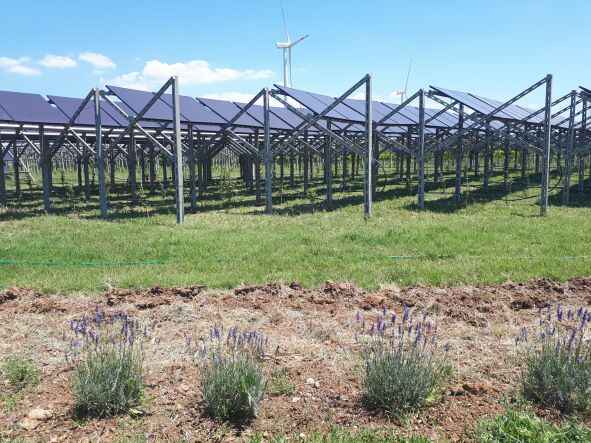Landfill Gas Collection System and Methods Explained
Landfill gas collection system is any assemblage of components or equipment that are used to isolate and extract gaseous renewable fuel that is produced from biodegradation of waste in a landfill.
This article discusses landfill gas collection system and methods, as outlined below;
-Landfill Gas Collection Method: How Landfill Gas is Collected
-Landfill Gas Collection System: Types/Methods
-Parts of a Landfill Gas Collection System
Landfill Gas Collection Method: How Landfill Gas is Collected
Landfill gas is collected by drilling recovery wells into the landfill, to which a system of transport pipelines is connected [1].
This set-up makes it possible for gaseous biofuel that is produced in the process of landfill gas generation, to be extracted effectively for possible treatment and utilization.
The landfill gas recovery system can be equipped with pumps, in cases where large volumes of LFG are involved, and/or where there is need for supplementary pressure to boost recovery efficiency.
Landfill Gas Collection System: Types/Methods
The two(2) types of landfill gas collection systems are passive and active types.
It can also be said that the methods of landfill gas collection are passive and active.
These two categories are discussed individually below;
1). Passive Landfill Gas Collection System
Passive landfill gas collection system is a type of collection system that is used to extract landfill gas from the site where it is produced, without the application of any extra or external pressure to facilitate gas extraction.
In passive landfill gas collection systems, no pressure-supplementation equipment, or other active extraction measures, are used.
Rather, this type of LFG collection system relies on ambient migration of the landfill gas into vents or recovery wells that have been installed on the site.
The wells are usually cased using perforated plastic materials that allow for entry of gas from the landfill.
Passive landfill gas collection systems depend on natural factors that already exist on the site; such as differences in gas pressure and concentration, to cause the migration of gas into the wells.
2). Active Landfill Gas Collection System
Active landfill gas collection system is a type of landfill gas collection system that is equipped with a vacuum system, pump, or blower-flare unit that supplies extra pressure to direct or force the landfill gas through the well and pipeline system, to the desired destination.
The use of active landfill gas collection system is recommended in cases involving large-scale gas production, long-distance transport, and/or need for rapid gas migration.
Parts of a Landfill Gas Collection System
Parts of a landfill gas collection system are recovery wells, trenches, branch piping, header piping, leachate treatment systems, blower-flare unit, and transport pipeline.
The wells, trenches, piping and treatment systems can be collectively referred to as the ‘wellfield’, which works alongside the blower-flare station and transport pipeline to control landfill gas flow effectively.
These components are briefly discussed below;
1). Wellfield (as one of the Parts of a Landfill Gas Collection System)
The landfill gas collection wellfield is an integrated subsystem which comprises of all components and equipment that directly collect and treat gases and other byproducts of landfill waste breakdown.
These components and equipment are namely; the recovery wells, trenches, header and branch piping, and leachate control system.
Recovery wells and Trenches
The wells drilled into a landfill for gas recovery are usually vertical, although they could be inclined or horizontal in rare cases.
These wells are accompanied by trenches that help to protect and enclose the pipelines that transport landfill gas away from the wells.
Factors like the depth, number, spacing, and design of recovery wells, depend on conditions that occur on the site, and the expected outcomes in terms of performance and output.
Header and Branch Piping
The header and branch piping are used to connect the recovery well to pipelines that help to distribute landfill gas to its destination(s).
To ensure optimal performance, these components must be made from durable materials, and designed in such a manner that allows for upscale or downscale adjustments in the delivery of landfill gas.
Leachate Control System
This system is comprised of equipment that help to isolate leachate from landfill gas. They may also be equipped to treat the landfill gas.
2). Blower-Flare Station
The blower-flare station (BFS) is a component of a landfill gas collection system, that is equipped to provide pressure to pump gas, as well as for moisture removal, and controlled burning.
Controlled burning is handled specifically by the landfill gas flare (the blower-flare station comprises of two subcomponents; blower and flare).
Landfill gas flare is a subcomponent of the blower-flare system, which is used mainly to burn landfill gas under controlled conditions.
The primary reason to flare landfill gas is to sagely dispose of its methane fraction, in a manner that has a low environmental impact, and poses less risk of health problems than other disposal methods.
Flaring of landfill gas also helps control odors and reduce health risks.
Blowers are designed mainly to provide constant or stable pressure for gas pumping, in active landfill gas collection systems.

3). Transport Pipeline (as one of the Parts of a Landfill Gas Collection System)
The transport pipeline system in a landfill gas collection facility, is connected directly to the header and branch piping(s), and links the recovery wells to the delivery destination of the landfill gas.
Conclusion
Landfill gas collection system is a system that includes wells, pipelines and vacuum equipment, for the recovery, treatment and transport of landfill gas.
The types of landfill gas collection systems are;
1. Passive Landfill Gas Collection System
2. Active Landfill Gas Collection System
Parts of a landfill gas collection system are;
1. Wellfield
2. Blower-Flare Station
3. Transport Pipeline
References
1). Stevens, D. W. (2012). “An Empirical Analysis of Gas Well Design and Pumping Tests for Retrofitting Landfill Gas Collection.” Engineering. Available at: https://www.semanticscholar.org/paper/An-Empirical-Analysis-of-Gas-Well-Design-and-Tests-Stevens/32c63f1b82b7a6163d190ff39e965189eb1ac5a6. (Accessed 24 November 2022).

